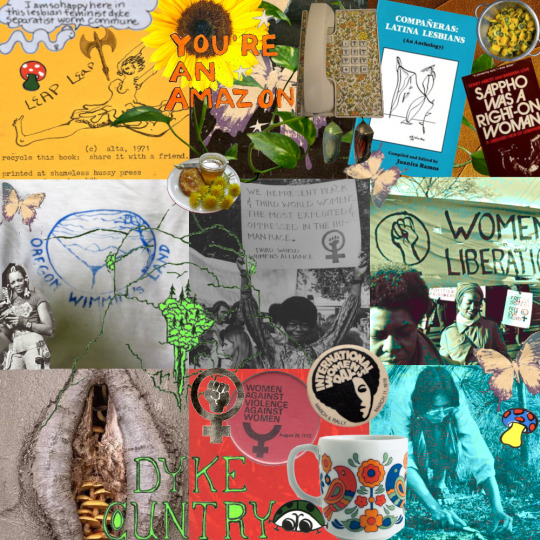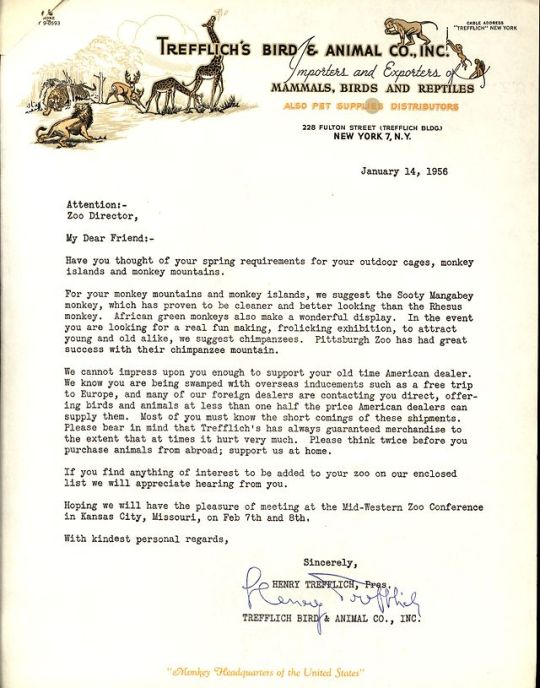#source: uwmspeccoll
Explore tagged Tumblr posts
Text

Feminism and hippie culture/aesthetics 🌻🐿️🦎🌼 board for anon
Yonic tree hollow with fungi - https://www.tumblr.com/radfemboards/730479934654529536?source=share
2. Sunflower png - https://www.tumblr.com/radfemboards/730479811159605248/northlamed-i-know-this-has-probably-been-done-a?source=share
3. Country Lesbians: The Story of the Womanshare Collective - https://www.tumblr.com/radfemboards/730479775264784384/fernstream-uwmspeccoll-staff-pick-of-the-week?source=share
4. 70s style floral phone - https://www.tumblr.com/radfemboards/730479762986893312/disease-70s-style-phone-decor?source=share
5. Houseplant vine - https://www.tumblr.com/radfemboards/730479754952720384?source=share
6. 60s/70s Lesbian Feminist books from Archieve.org - https://www.tumblr.com/radfemboards/730479729382162432/a-wlw-reads-books-from-archiveorg-i-was-amazed?source=share
7. 1960s Activist photos - https://www.tumblr.com/radfemboards/730479723081302016?source=share
8. Vintage mug - https://www.tumblr.com/radfemboards/730479711152635905?source=share
9. Anti-Violence Against Women pin button '75 - https://www.tumblr.com/radfemboards/730479707196424192?source=share
10. International Womens Day pin button '78 - https://www.tumblr.com/radfemboards/730479704168169472?source=share
11. Amazon pin button - https://www.tumblr.com/radfemboards/730479700895498240?source=share
12. Shameless Hussy Press publication '71 - https://www.tumblr.com/radfemboards/730479687471628288/uwmspeccoll-first-feminist-press-shameless?source=share
13. Third World Women's Alliance protestor at a women's lib protest '70 - https://www.tumblr.com/radfemboards/730479675746451456/oldnewyork-a-womens-liberation-demonstration?source=share
14. Butterflies from illustration published in the Haight-Ashbury Tribune '67 - https://www.tumblr.com/radfemboards/730479672492752897/undergroundrockpress-haight-ashbury-tribune?source=share
15. Cynthia Macadams / Emergence photographs - https://www.tumblr.com/radfemboards/730479661622149120/unionrising-cynthia-macadams?source=share
16. 1970s mushrooms and ladybugs stickers - https://www.tumblr.com/radfemboards/730479644852338688?source=share
17. Vintage rugs - https://www.tumblr.com/radfemboards/730479640371675136?source=share
18. Oregon Wimmin's Land shirt - https://www.tumblr.com/radfemboards/730482377873391616?source=share
19. “Dyke Country,” a poster by Marilyn Gayle, reprinted from the book What Lesbians Do - https://www.tumblr.com/radfemboards/730482374559809536/songsforgorgons-dyke-country-a-poster-by?source=share
20. Dandelions picked in a colander png - https://www.tumblr.com/radfemboards/730483570751242240/snailspng-things-i-loved-as-a-kid-pngs-1?source=share
21. Dandelion jam with toast on a plate png - https://www.tumblr.com/radfemboards/730483675809071104/random-pngs-part-120-1-golden-emperor-moth-2?source=share
22. Monarch butterflies in chrysalis png - https://www.tumblr.com/radfemboards/730483639970938880/snailspng-random-pngs-part-124-1-art?source=share
#sources are through the read more#hippie#hippie culture#feminist#feminist 60s 70s#60s#70s#feminist aesthetic#hippie aesthetic#women's liberation#women's lib#lesbian feminism#second wave feminism#moodboards#radfem#radical feminism#yonic#women's land#feminist communes#women only communes#wimmins land#feminist literature#seventies#sixties#anon request#feminism#collage#digital collage#the womanshare collective
16 notes
·
View notes
Text

Jonah The Fisherman by Reiner Zimnik
source uwmspeccoll via orphanedinstoryville
via
2 notes
·
View notes
Photo




Boardman Robinson illustrations for King Lear. source: uwmspeccoll.
2 notes
·
View notes
Photo






Cooking with Lizzie Black Kander
While Lizzie Black Kander earned the moniker of “Jane Addams of Milwaukee” for her social work with Milwaukee’s Russian Jewish immigrants, Kander is most famous for writing the Settlement Cookbook in which she compiled many of the recipes developed and used at the Settlement House.
The UW-Milwaukee Archives holds Kander’s papers, which include her notebooks with early recipes and menu plans, and our sibling department, @uwmspeccoll, holds several later editions of the Settlement Cookbook.
Most of the time we pull out Kander’s papers and cookbooks to teach about primary source analysis, but in this instance we decided to cook with them instead!
Our reference and instruction archivist, Abbi, decided on a Milwaukee Rye Bread for her foray into cooking with Kander. The recipe is interesting for a number of reasons. Rye flour is low in gluten, so it’s often mixed with a higher percentage of wheat flour, which allows the bread to develop a lighter structure and rise better. Kander’s recipe uses only 2 cups of wheat flour, to which she adds 4 cups of rye flour and a cup of riced potatoes, resulting in an extremely dense loaf.
Kander would have had access to plenty of fresh flour for her bread in Milwaukee. The Encyclopedia of Milwaukee notes:
By the early 1860s, the city had become the largest shipper of wheat in the world. And the Grain Exchange, an imposing structure located in downtown Milwaukee, “influenced the price of farm commodities internationally.”
Milwaukee soon also became a center for the processing of food crops. Flour was the first agricultural product to be processed large-scale in the city. By 1870, local output of flour had reached 1.2 million barrels, and the city trailed only St. Louis as a milling center.
Kander’s recipe calls for an ounce of cake yeast, which she most likely sourced from Milwaukee’s National Distilling (later Red Star Yeast). The bread also uses the water from the cooked potatoes, which makes the recipe vegan-friendly (at least until you slather the bread with butter). Finally, the bread is brushed with water after baking, a technique that helps to seal the crust and allow the bread to stay fresh longer.
Exploring Milwaukee through the lens of food history is fun and delicious! If any of our readers decide to cook from an edition of the Settlement Cookbook, we hope you’ll share your results with us!
#UWM Archives#uwm special#lizzie black kander#settlement cookbook#milwaukee food history#culinary history#cooking with kander#red star yeast#encylopedia of milwaukee#rye bread#milwaukee rye bread#cookingenthusiast#Milwaukee#baking#bread#national distilling#abbi#special collections#archives#cookbooks#recipes
90 notes
·
View notes
Photo



#Stationery Saturday
Our sister department @uwmspeccoll is usually the one who posts visually stunning examples of all types of printed materials. We love seeing their posts that display print designs, showcase typography, and explore modes of paper making or printing processes. There are many ways of working with and learning from primary sources; we can investigate their content but we can also investigate their materiality. The UWM Special Collections department often reminds us as researchers to look at the construction of these objects and the artistry that went into their creation.
But, unlike the Special Collections department, the Archives Department doesn’t have a store of fine press and artist’s books. And we don’t have shelves of comic books and zines. Because our department deals with manuscript collections and organizational records, we simply don’t have the same cache of visual materials to share and investigate in that same manner...or, do we?
Check in with us on Saturdays as we practice what we preach to our student researchers: investigate the object as much as the content. This new series, #Stationery Saturdays, will showcase the fascinating letterheads and stationery examples held within our collections. We may take a look at the historical context behind some of these examples or we may just invite you to enjoy the unexpected artistry with us.
For our inaugural #Stationery Saturday, we are presenting the beautiful stationary of Trefflich’s Bird & Animal Co, Inc, which we found in our Zoological Society of Milwaukee County Records. The Trefflich’s Bird & Animal Company was a twentieth century animal dealer, with whom the Zoological Society of Milwaukee and the Milwaukee County Zoo conducted business. This company stationery is wonderfully detailed! The letterhead component includes multiple graphics; notice that in addition to the safari animal scene along the right and center there are mischievous monkeys climbing up the company logo along the left. The company’s name, logo, and address are comprised of multiple fonts in various colors, some of which are also shaded. This stationary also includes a footnote with the company’s motto printed in a yellow script typeface “Monkey Headquarters of the United States.” Despite the fact that there is certainly a lot going on with the graphics and typography of the address block, the letterhead doesn’t overwhelm the page. If we ask very nicely (and we are), @uwmspeccoll may offer their thoughts about the typography or educate us on how this stationery was likely printed. Viewers, we’d love to hear your thoughts, too!
#letterhead#correspondence#typeface#zoological society of milwaukee county#typewriter#UWM Archives#letterpress#katie#typography#font#design#stationery#stationery saturday
17 notes
·
View notes
Photo




“Milestone Monday: Joyeux Anniversaire M. Montaigne!
Today we honor the birth of French philosopher Michel de Montaigne, born on this day, the 28th of February in 1533. Not only was Montaigne one of the most significant figures of the French Renaissance, but he is also widely considered to have popularized the essay as a literary form, so you can thank (or curse) him for all those late nights facing down a deadline during your school years!
To celebrate this occasion, we present the Riverside Press edition of Essays of Michael, Lord of Montaigne, written by him in French and done into English by John Florio. This three-volume set was published by Houghton, Mifflin & Company of Boston and New York, and printed by Riverside Press in Cambridge, Mass. The volumes were published over three years between 1902 and 1904, with each volume limited to 265 copies.
The book was designed by lauded typographer and book designer Bruce Rogers. Rogers designed books for Riverside Press from 1895-1911, initially working on trade publications and designing advertisements for the Atlantic Monthly. From 1900 onward, Rogers led Riverside’s Department of Special Bookmaking, where he oversaw the design for the presses fine press output. It was for this edition that Rogers designed and cut his first typeface, a Venetian styled type appropriately named Montaigne.
Each volume features a different portrait on the frontispiece. Volume one contains a wood engraving of Montaigne based on a portrait by French engraver Thomas de Leu. Volume two features a portrait of the translator, John Florio, while the third volume showcases Marie de Gournay, the original editor and publisher or Montaigne’s work. The title page of the first volume bears the motto of Riverside Press: “tout bien ou rien”—do it well or not at all, as well as Montaigne’s famous skeptical remark, “Que sais-je?”—what do I know?
—Olivia, Special Collections Graduate Intern”
source: uwmspeccoll
0 notes